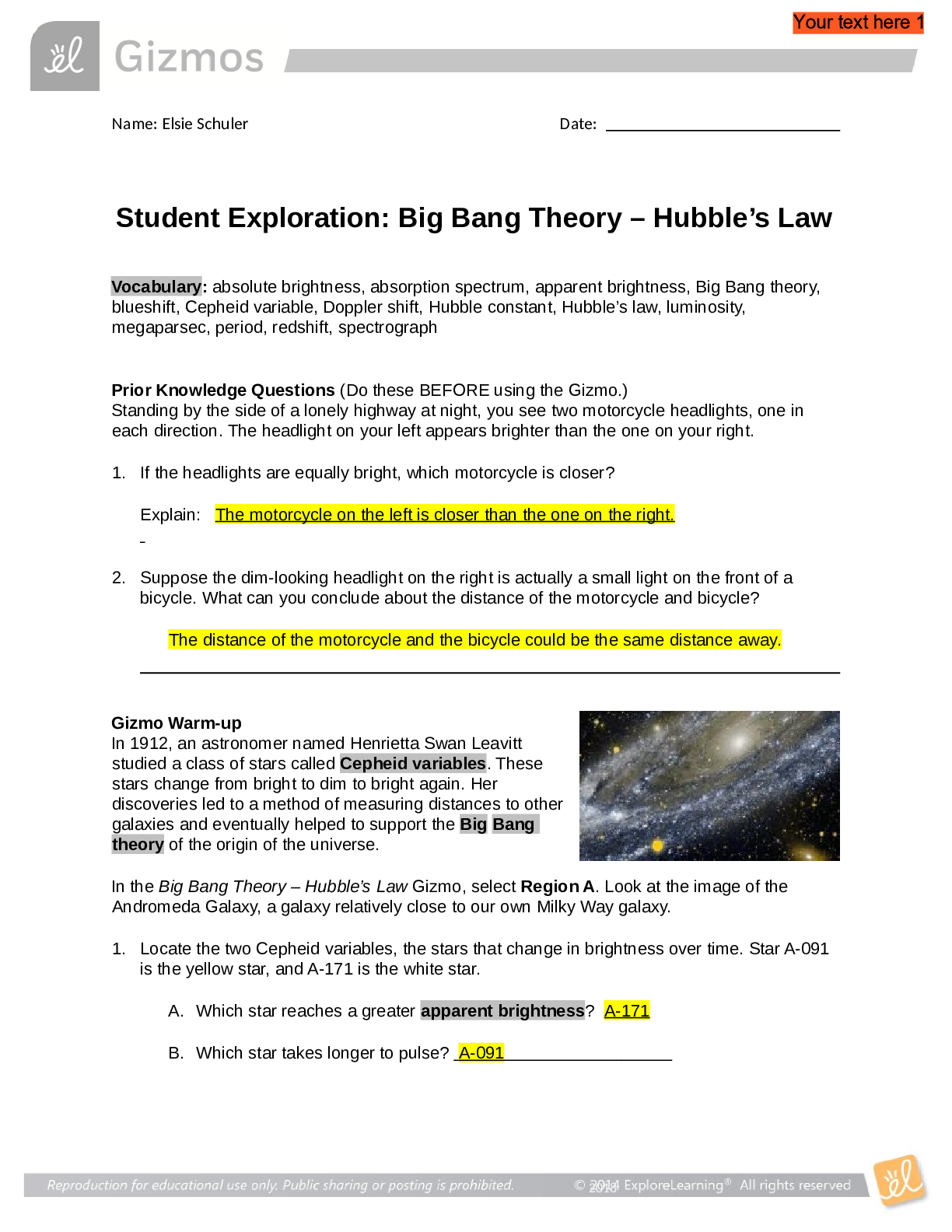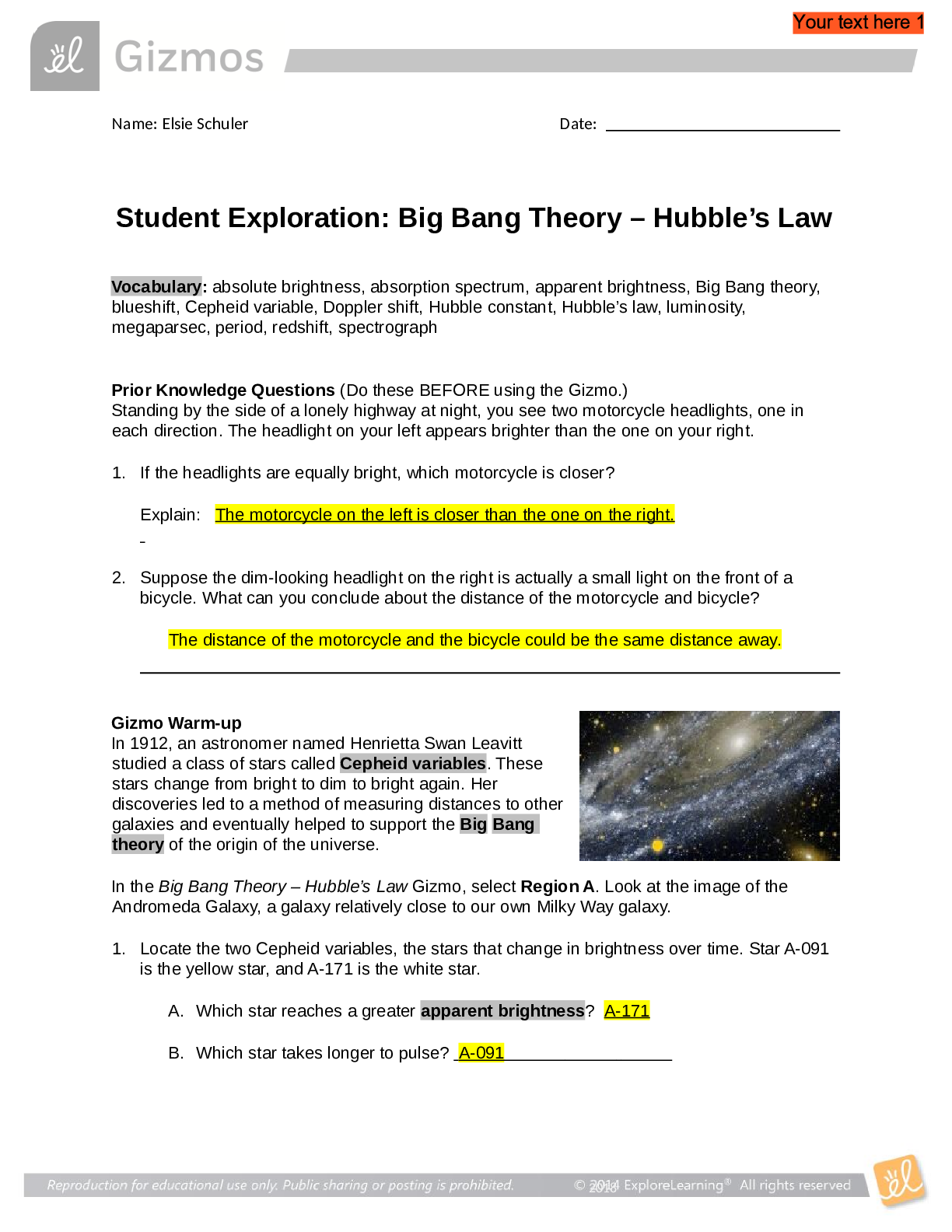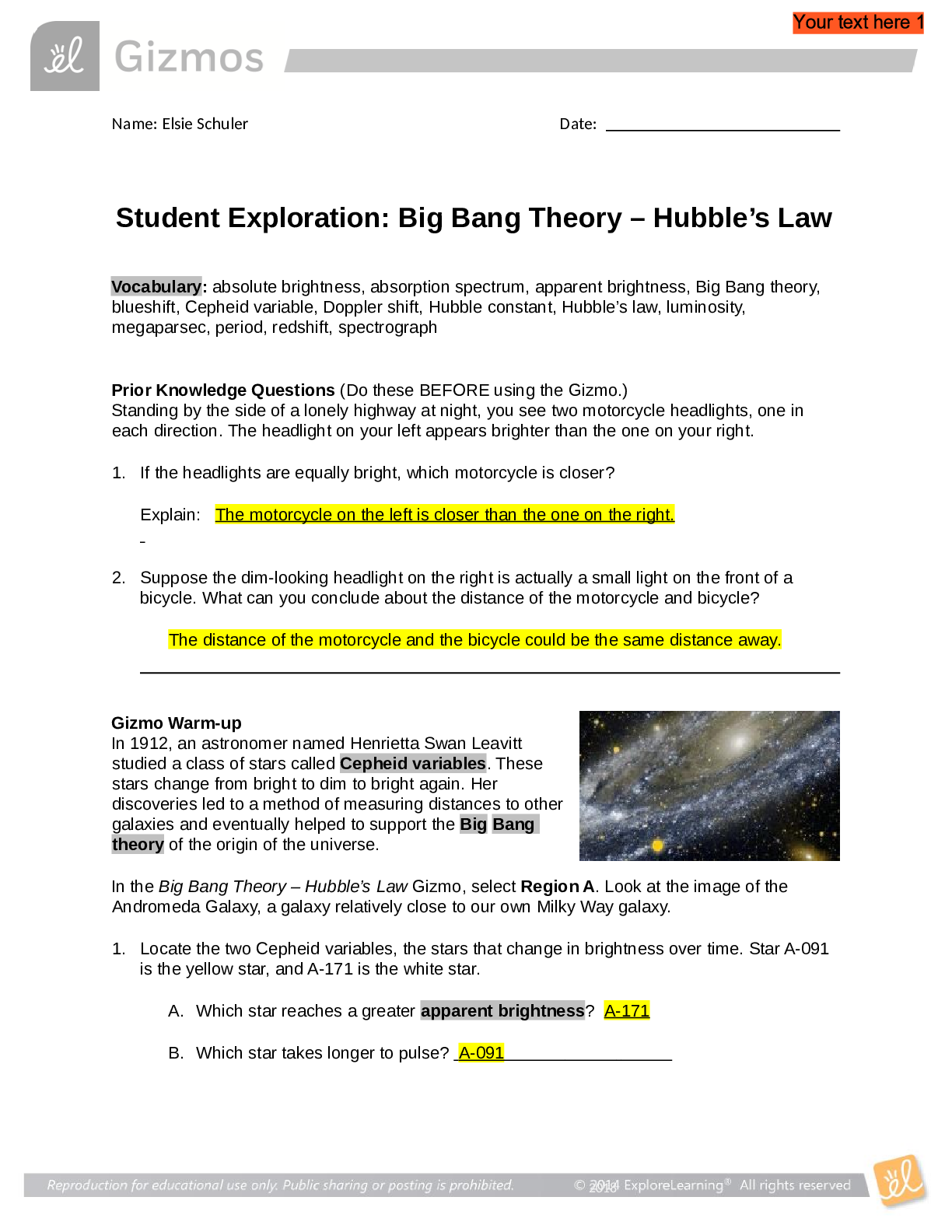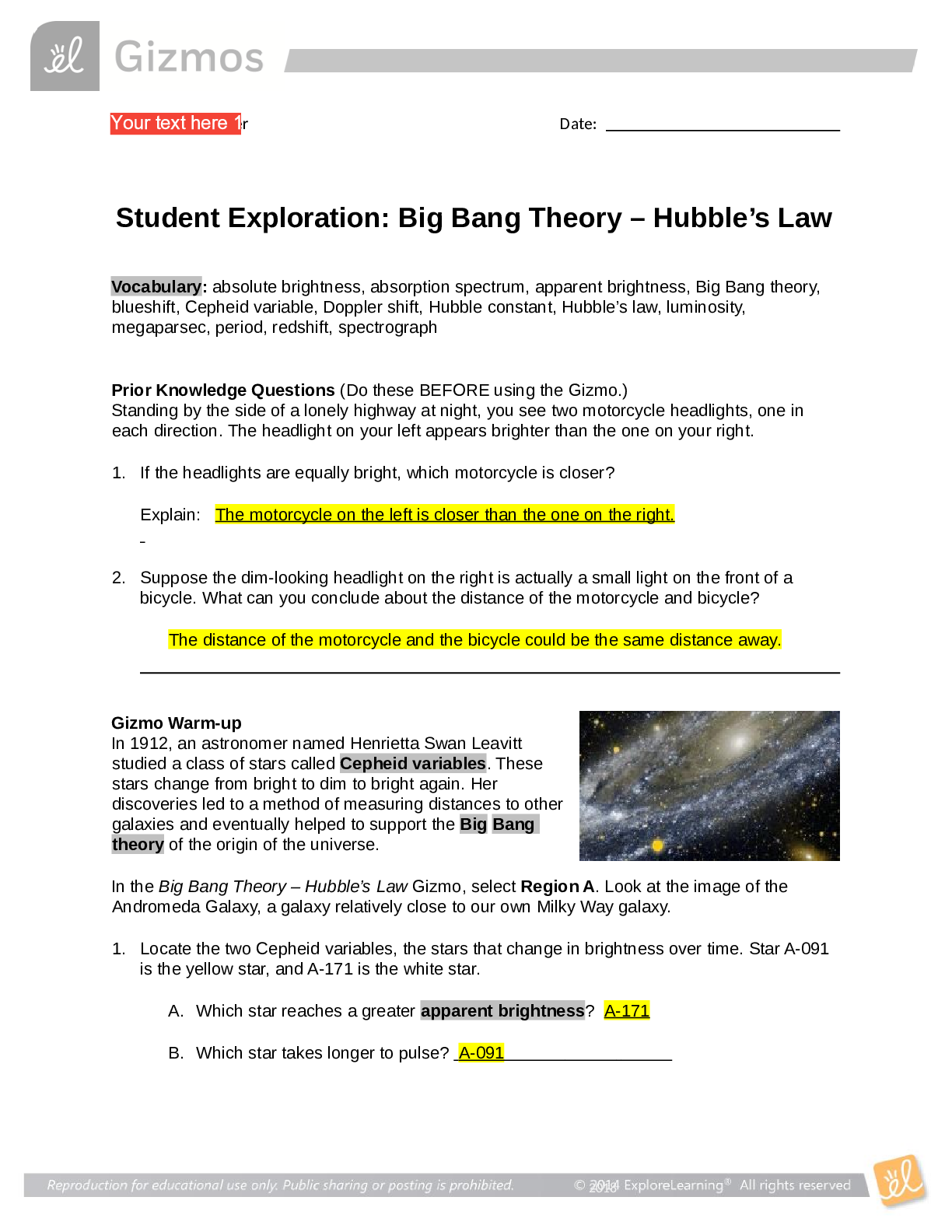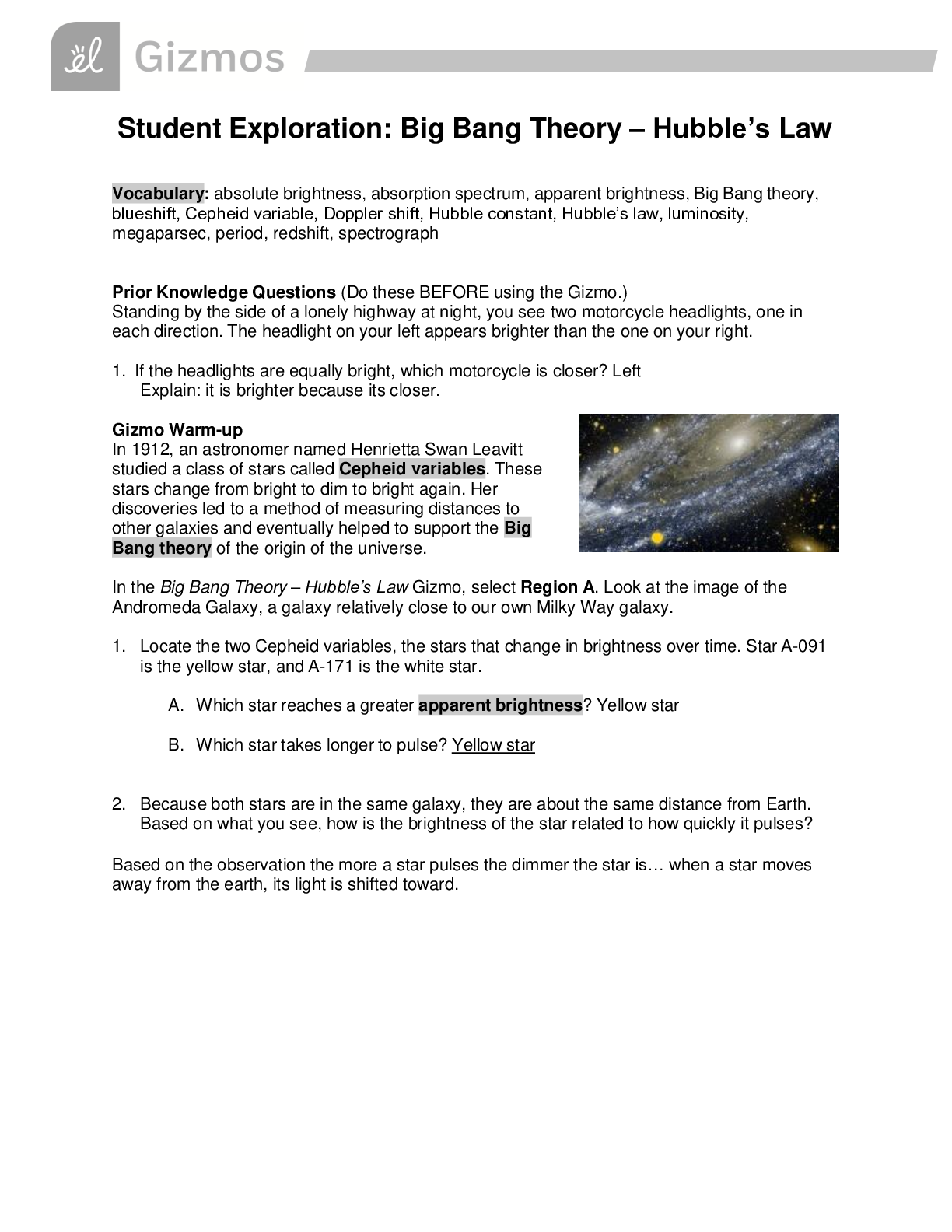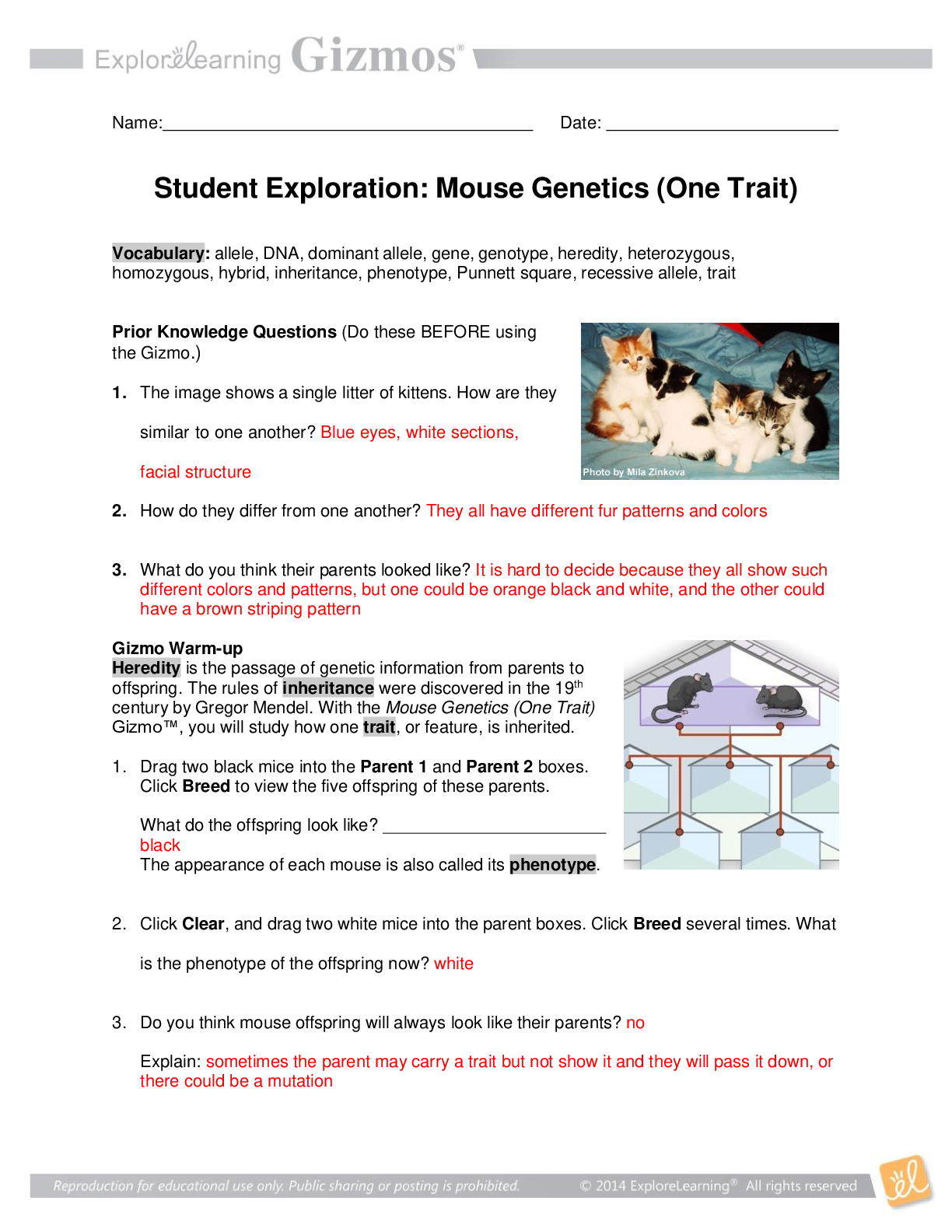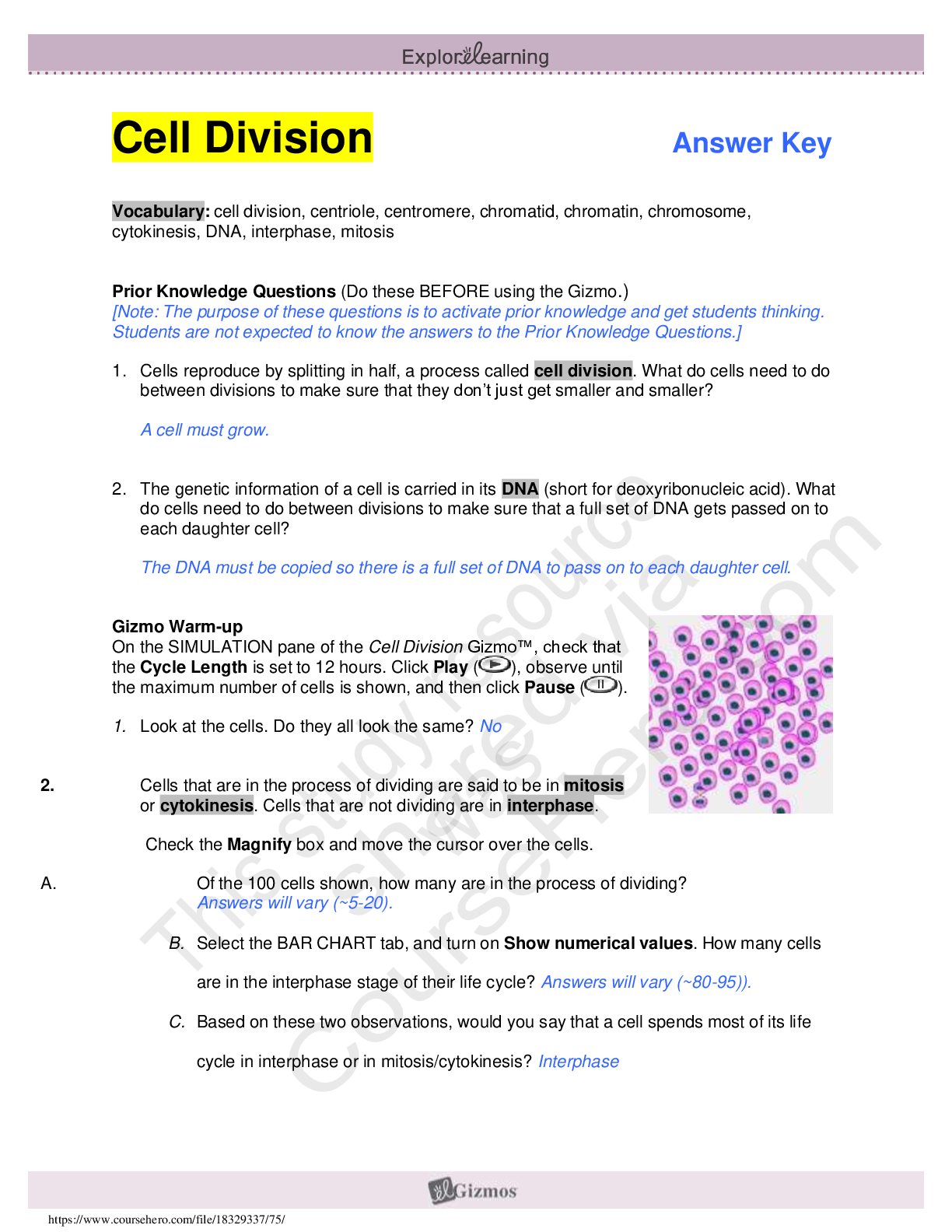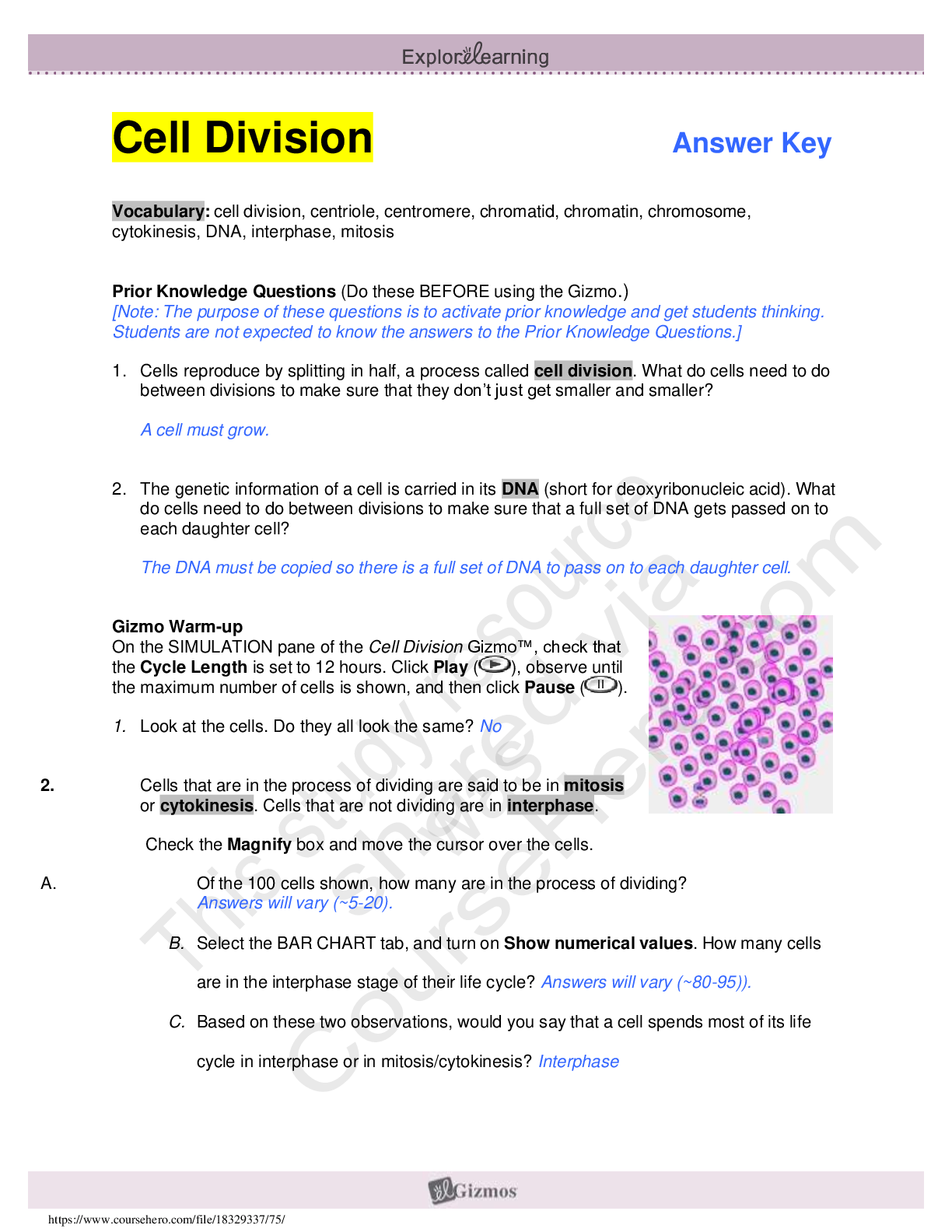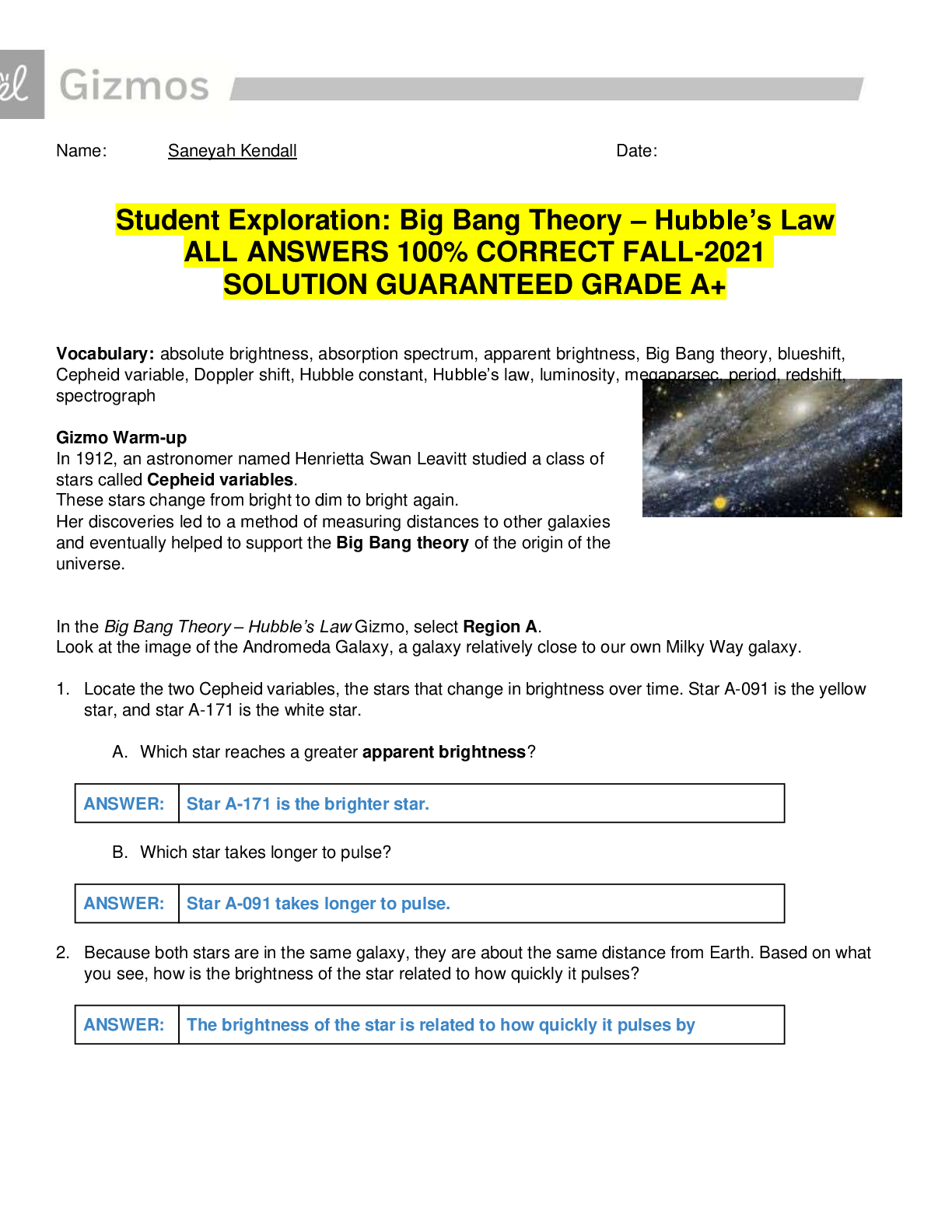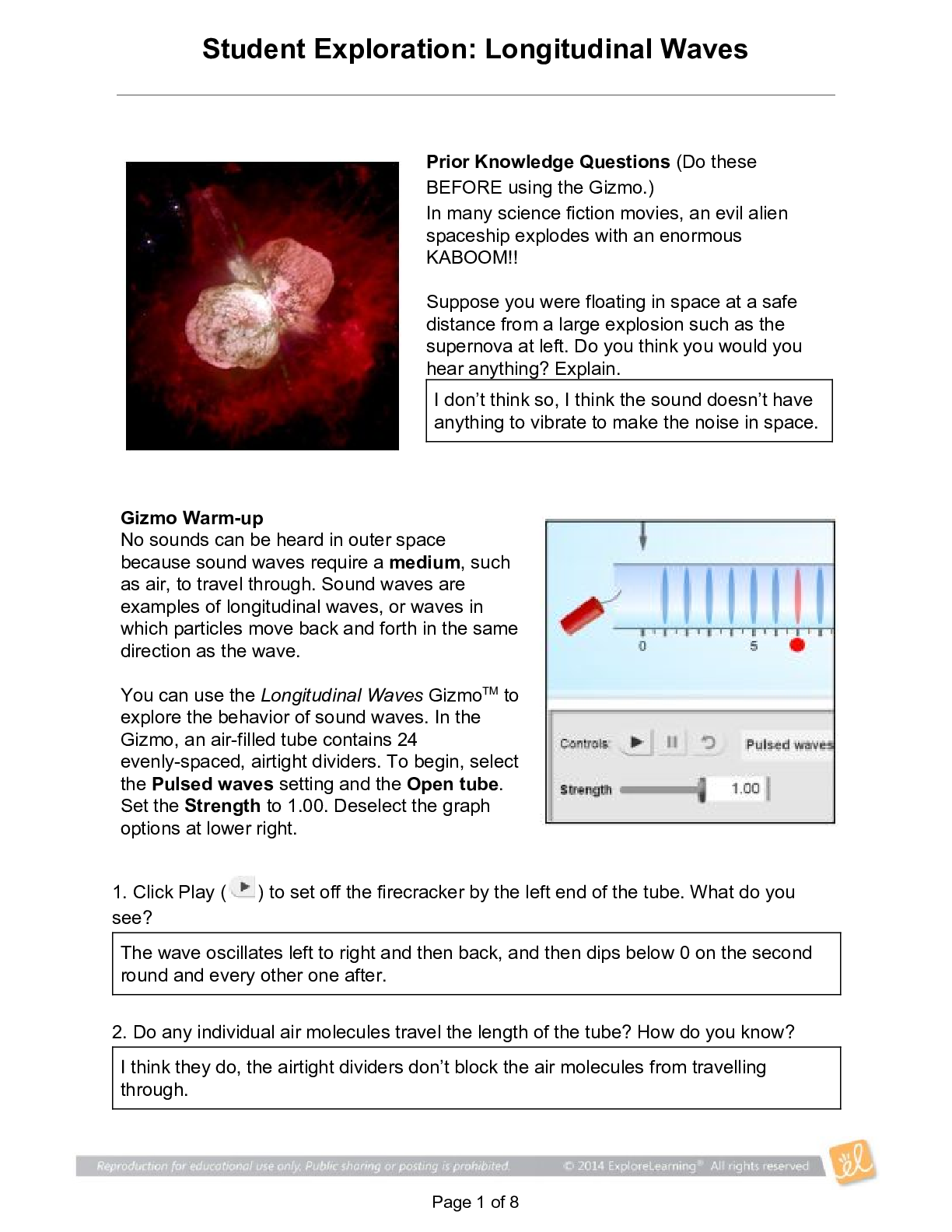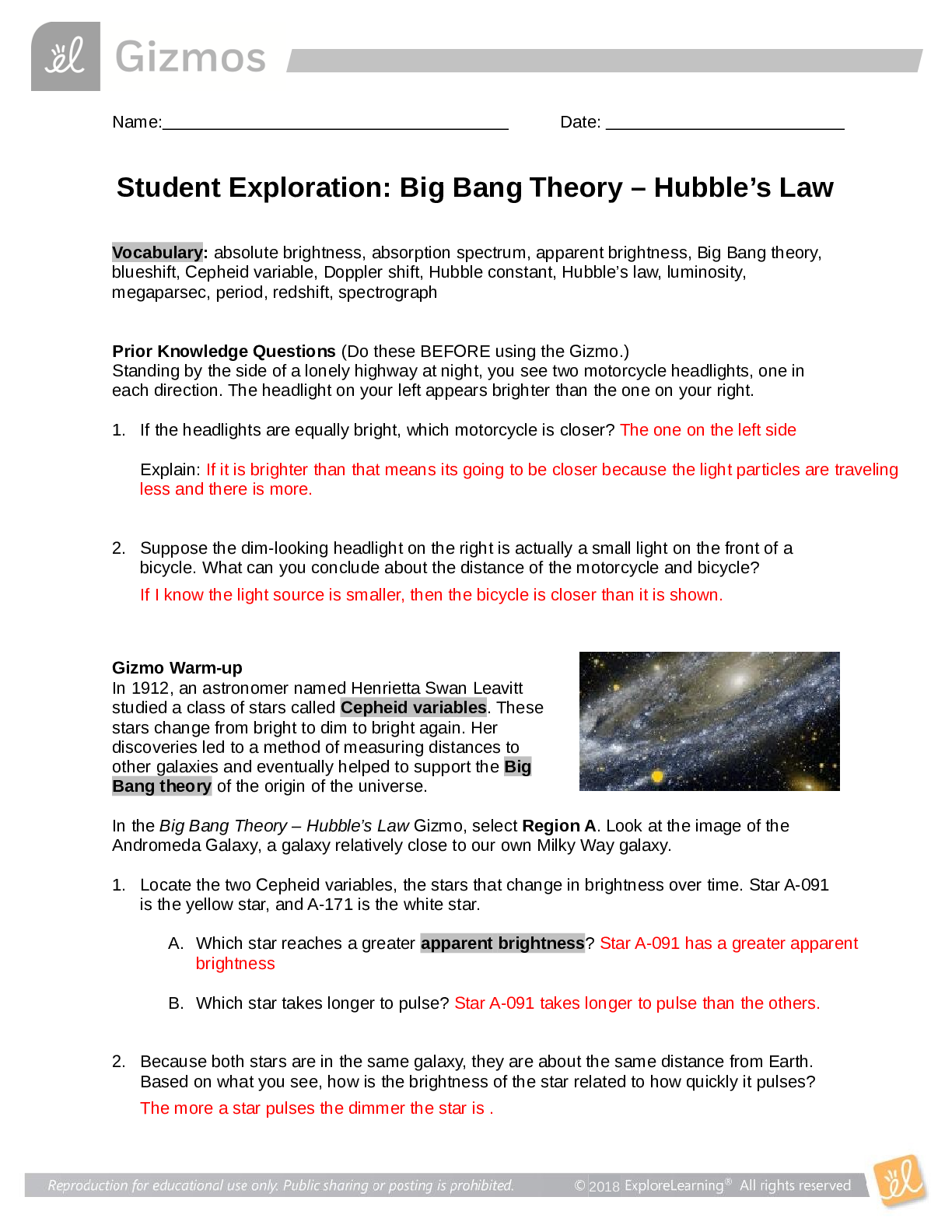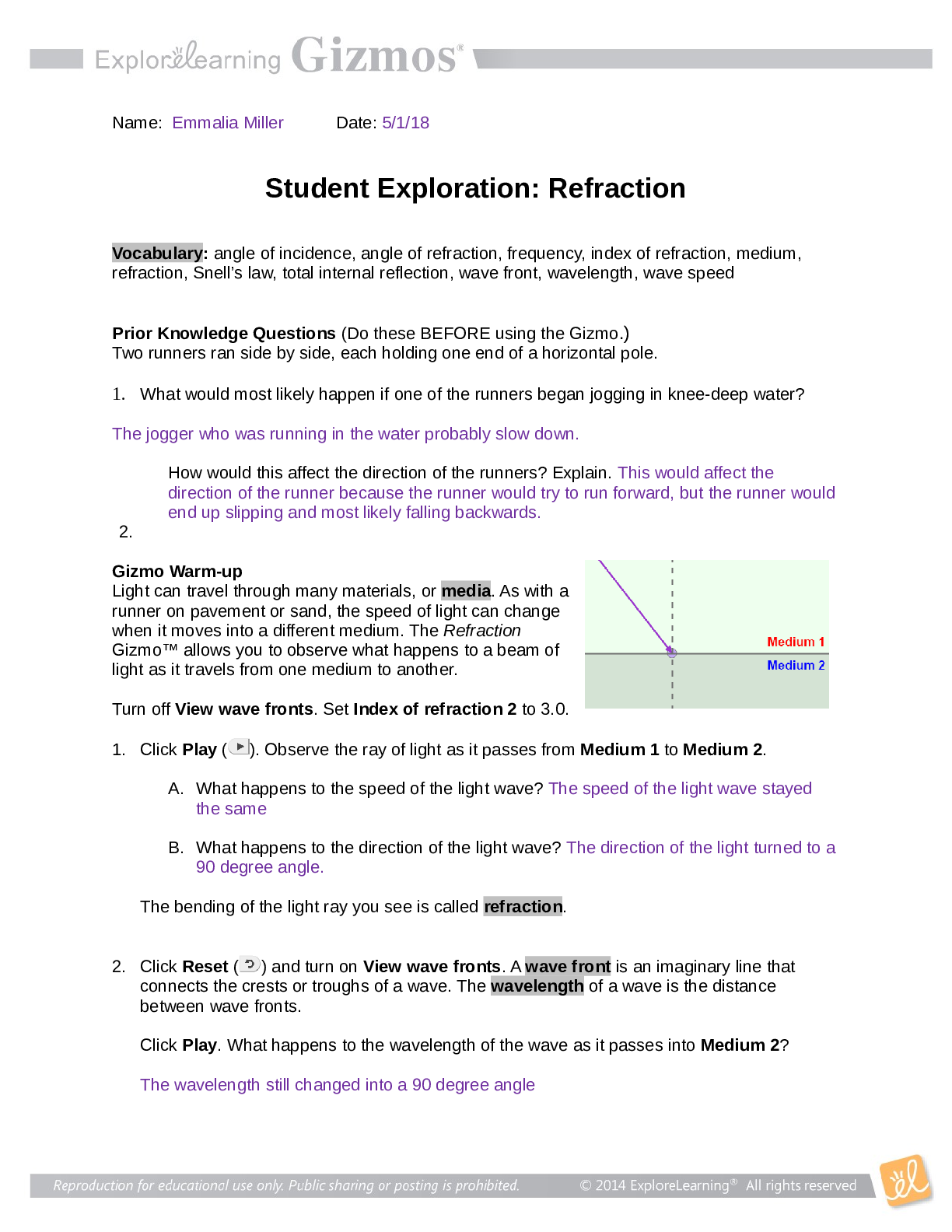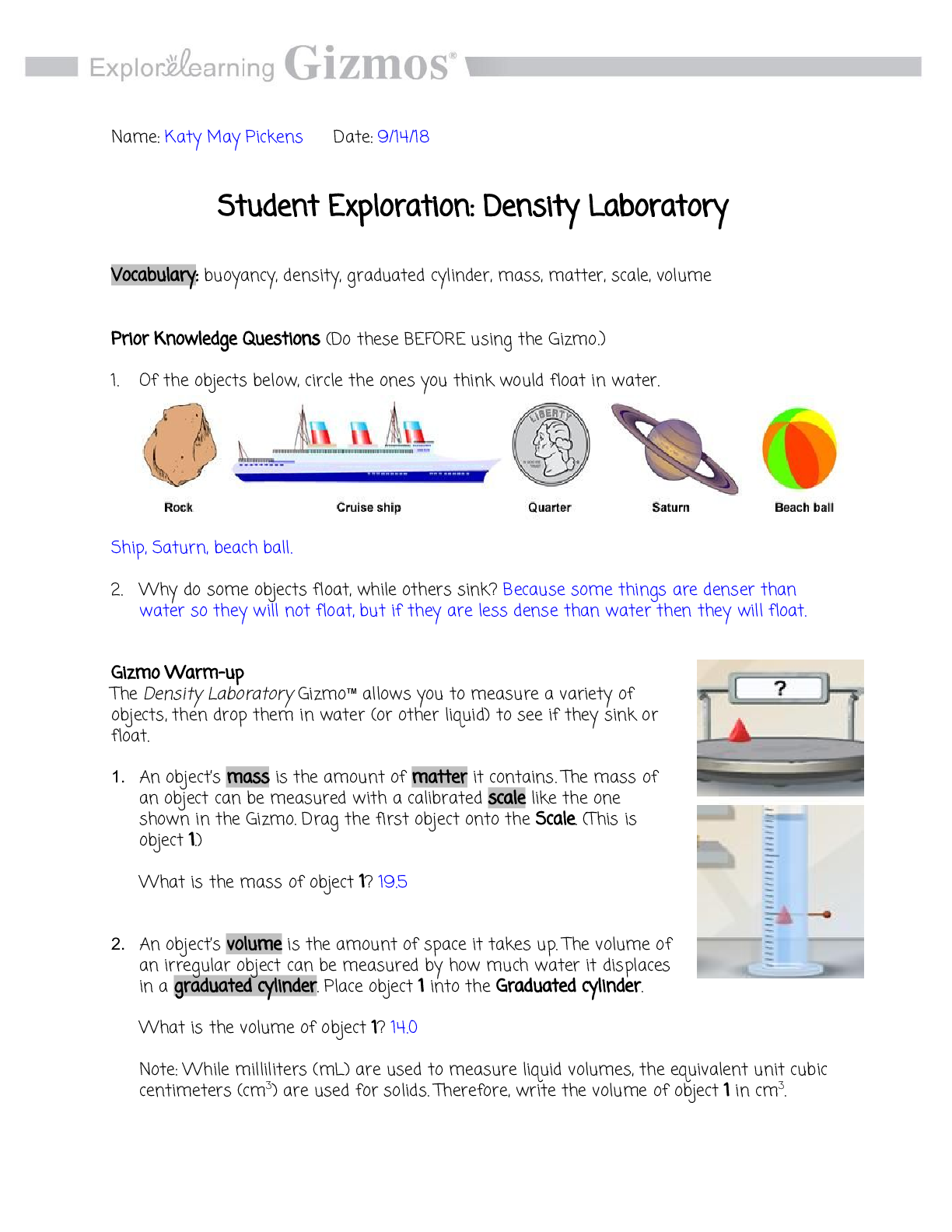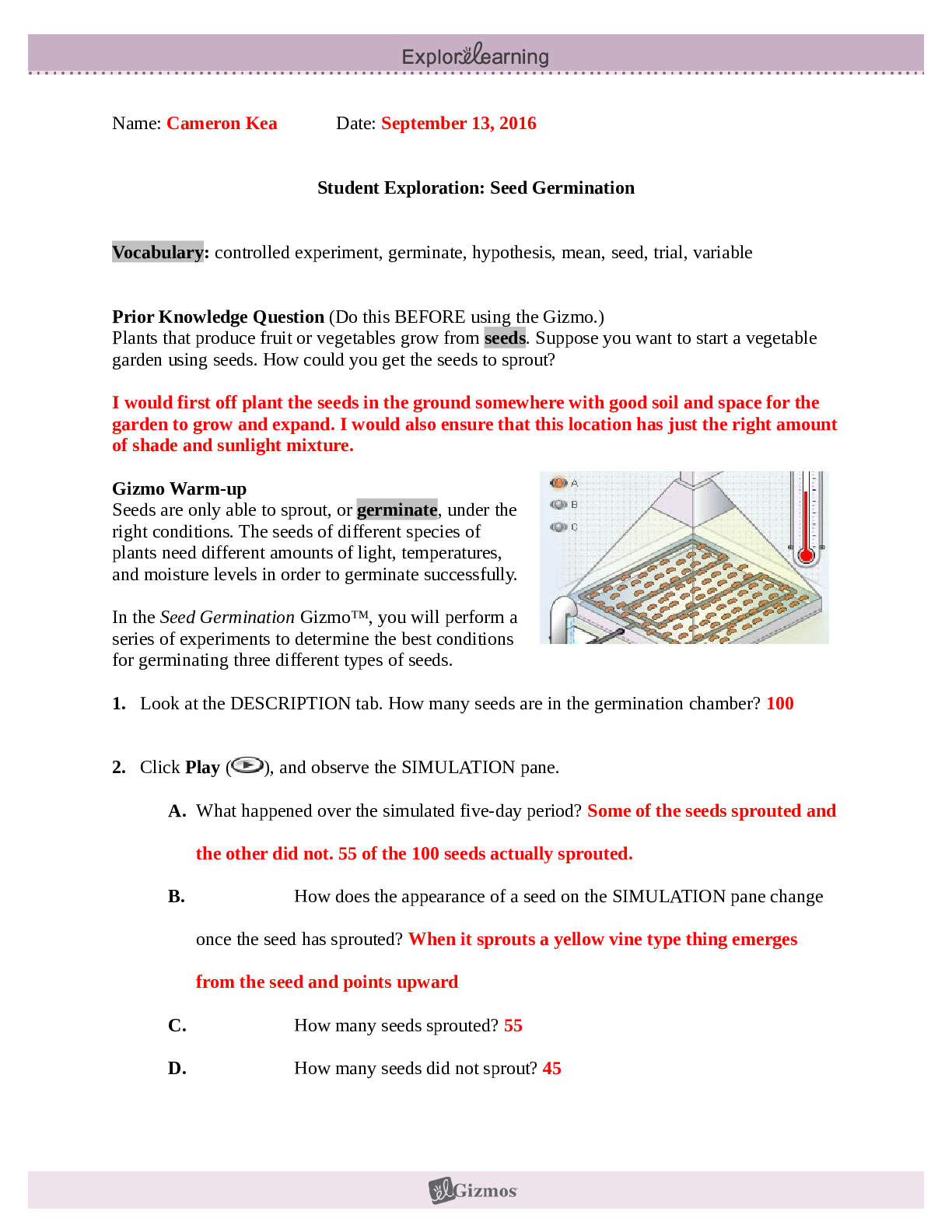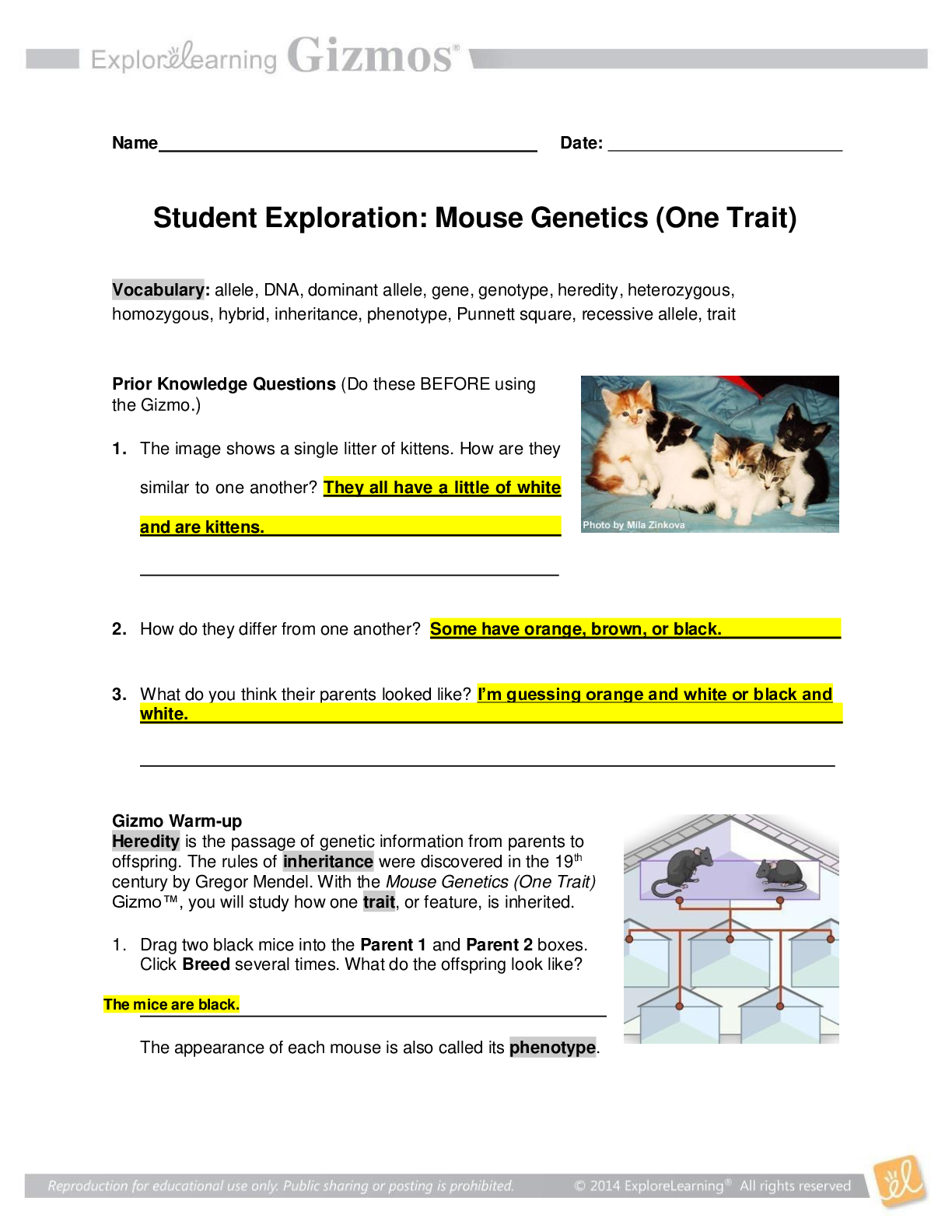SCIENCE 101 > GIZMOS > GIZMOS.Student Exploration: Ray Tracing (Lenses) Vocabulary: concave lens, convex lens, focal point, (All)
GIZMOS.Student Exploration: Ray Tracing (Lenses) Vocabulary: concave lens, convex lens, focal point, image, magnification, real image, refraction, virtual image
Document Content and Description Below
Student Exploration: Ray Tracing (Lenses) Vocabulary: concave lens, convex lens, focal point, image, magnification, real image, refraction, virtual image Prior Knowledge Questions (Do these BEFORE ... using the Gizmo.) Agnes is trapped on a desert island with nothing but a magnifying glass. She wants to use the glass to focus sunlight and start a fire. She holds the glass above some dry grass as shown at right. 1. On the diagram, draw the path the Sun rays will likely take from the magnifying glass to the grass. 2. A magnifying glass is an example of a convex lens —a lens that curves outward on both sides. Why is a convex lens useful for starting fires? Because the lens can direct the light to a point, it focuses all the light there so that point heats up, and can catch fire. Gizmo Warm-up The Ray Tracing (Lenses) Gizmo shows light rays passing through a lens. The light rays are bent by refraction as they pass through the lens and form a focused image to the right of the lens. To begin, turn on the Colorize lines checkbox. Under Show lines, turn off the Central line and the Line through focal point so that only the Parallel line is showing. 1. The blue dots in front of and behind the lens are the focal points of the lens. Move the candle on the left back and forth and up and down. What is always true about the light ray that emerges from the right side of the lens? It always goes through the focal point 2. Turn off the Parallel line and turn on the Line through focal point. Move the candle. What do you notice about this line? It is always parallel to the principal axis2019 Activity A: Real and virtual images Get the Gizmo ready: Turn on the Parallel line, Central line, and Line through focal point. Move the candle to -24 on the central axis, with the focal point at -12. Introduction: A convex lens is called a “converging lens” because it focuses light rays into a point. A real image is formed where the light rays emitted from a point converge on the other side of the lens. If you placed a sheet of paper at the image, a focused image would be projected onto the paper. Question: How do lenses create images? 1. Observe: In its current configuration, the distance from the candle to the focal point is 12 units and the distance from the focal point to the lens is also 12 units. A. What do you notice about the orientation of the candle’s image on the right side of the lens? It’s inverted. B. What do you notice about the size of the image? The image is slightly smaller. 2. Investigate: Complete each action [Show More]
Last updated: 1 year ago
Preview 1 out of 11 pages
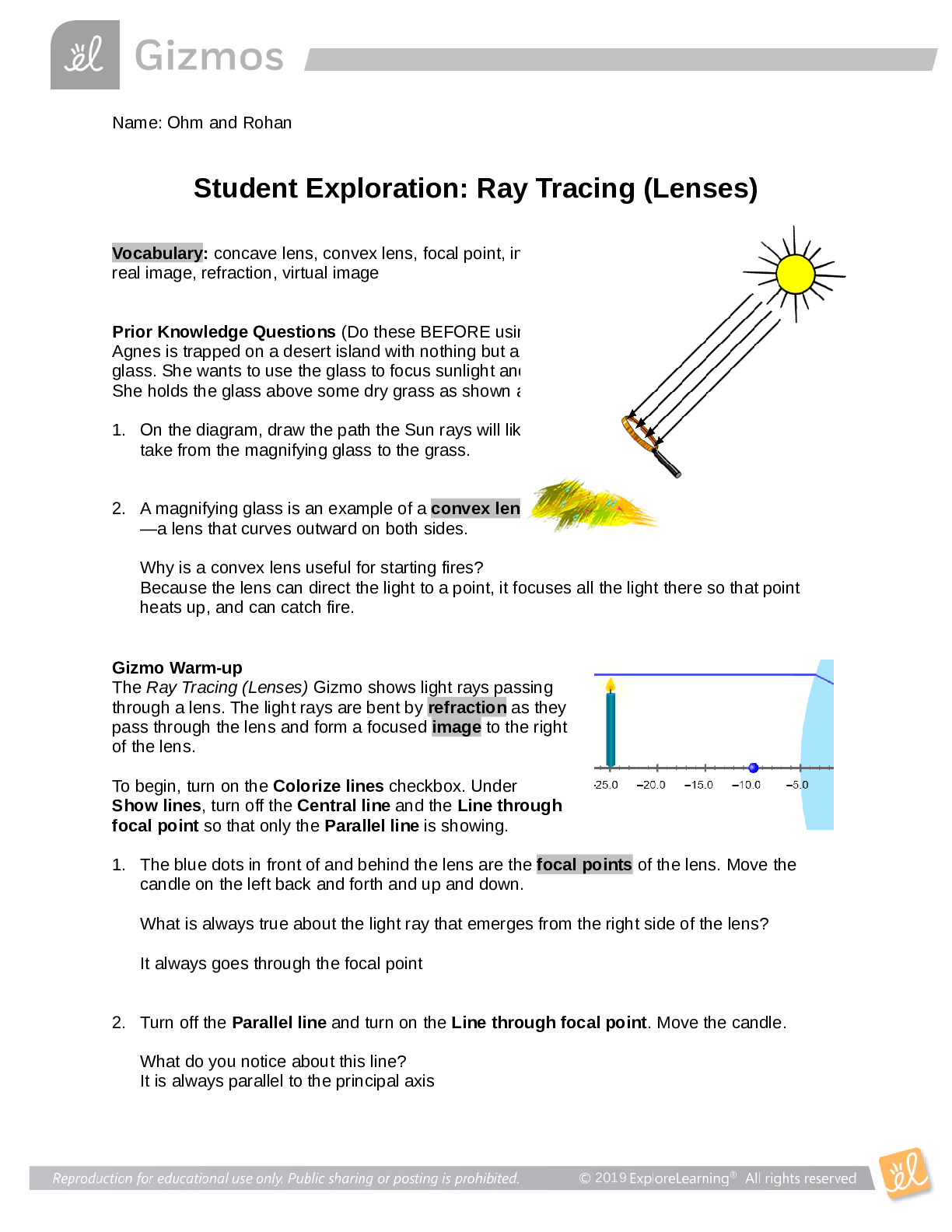
Reviews( 1 )

by wendy culp-wing · 2 years ago
Document information
Connected school, study & course
About the document
Uploaded On
Apr 27, 2021
Number of pages
11
Written in
Additional information
This document has been written for:
Uploaded
Apr 27, 2021
Downloads
1
Views
150

.png)
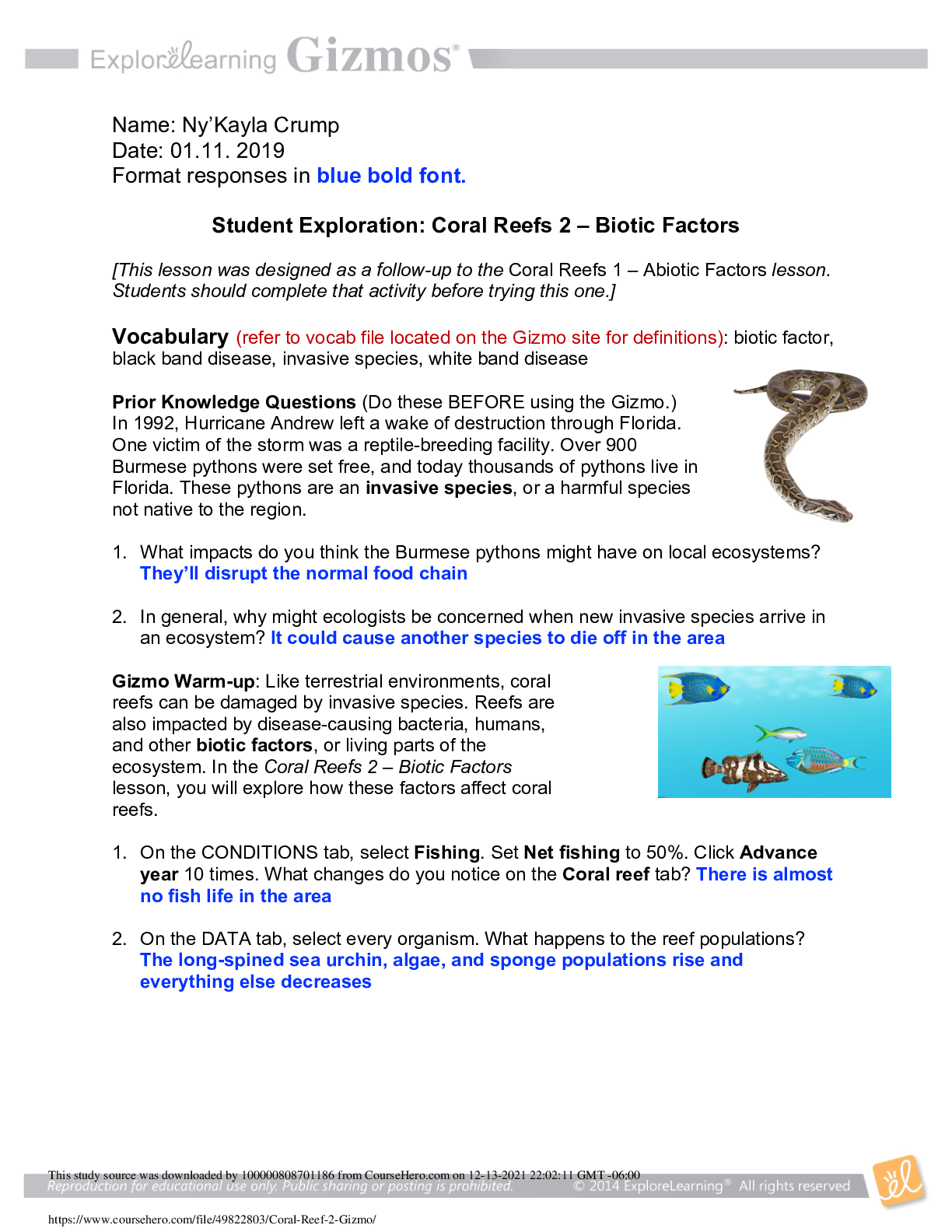
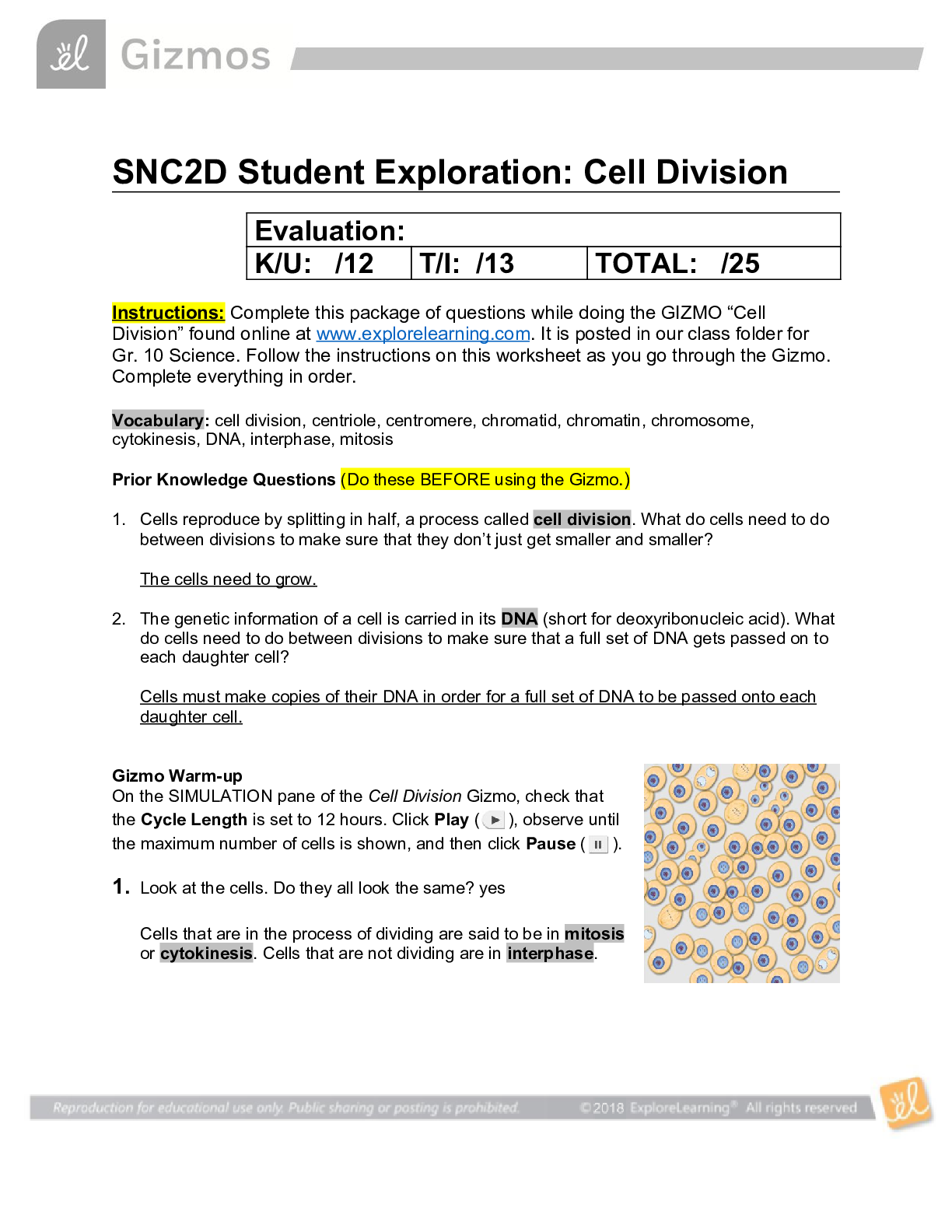

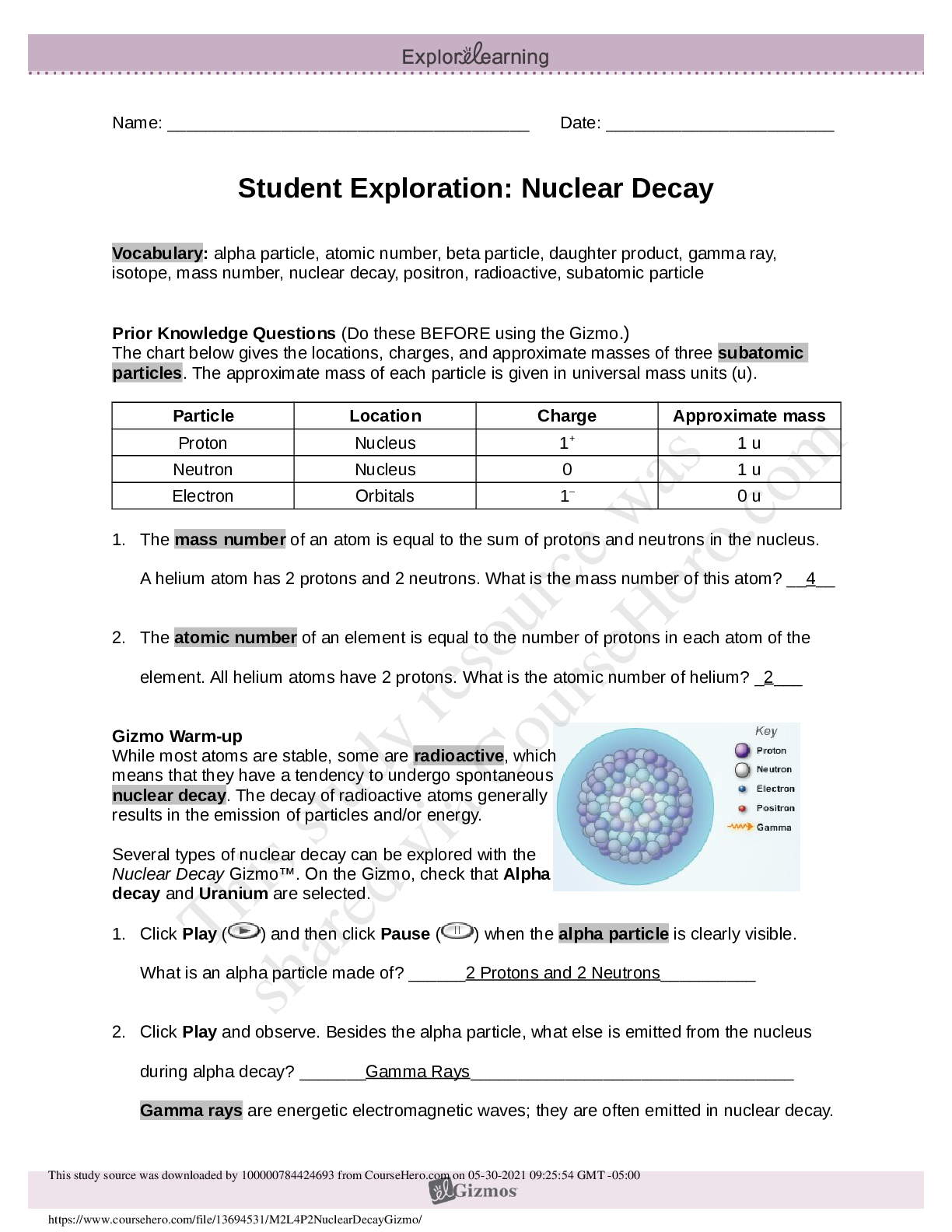

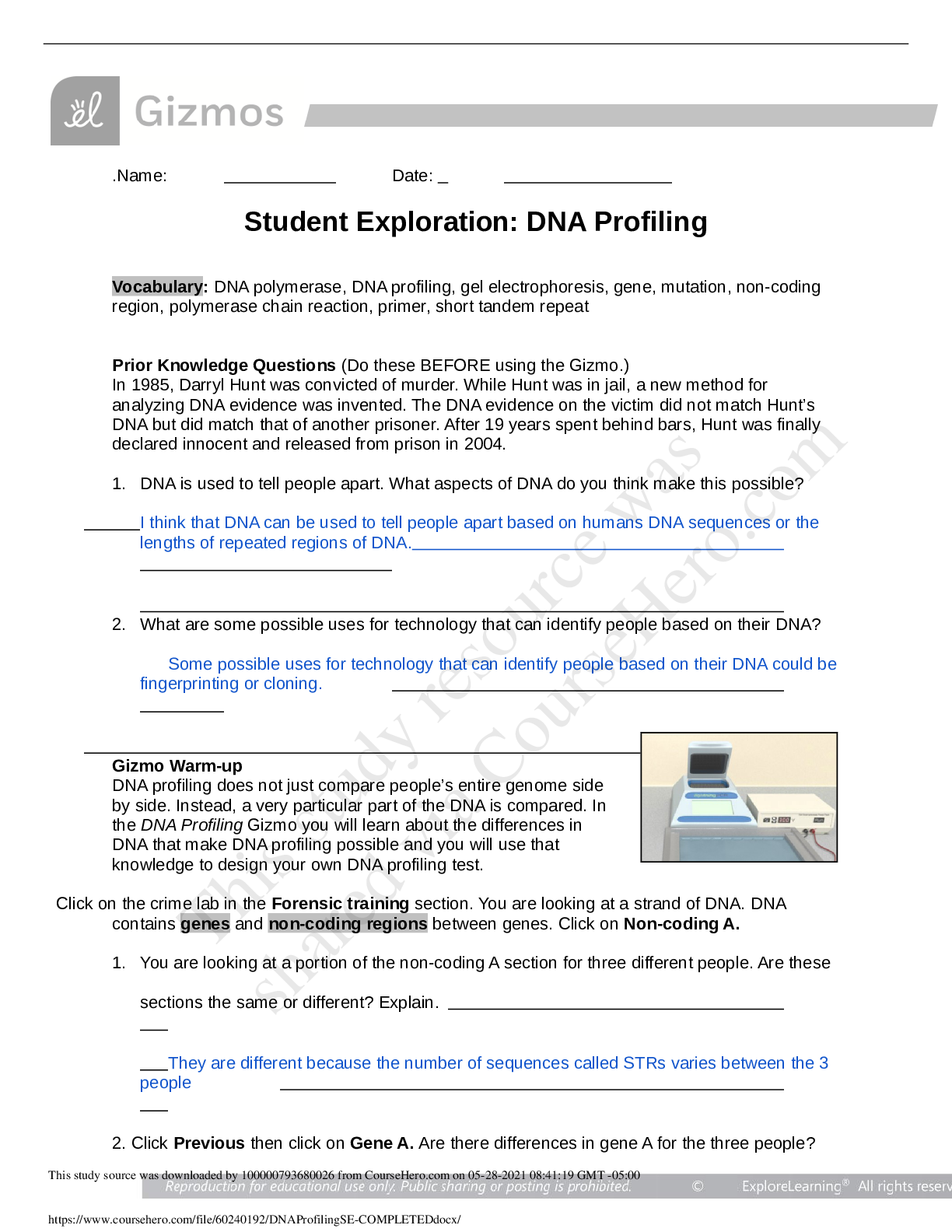
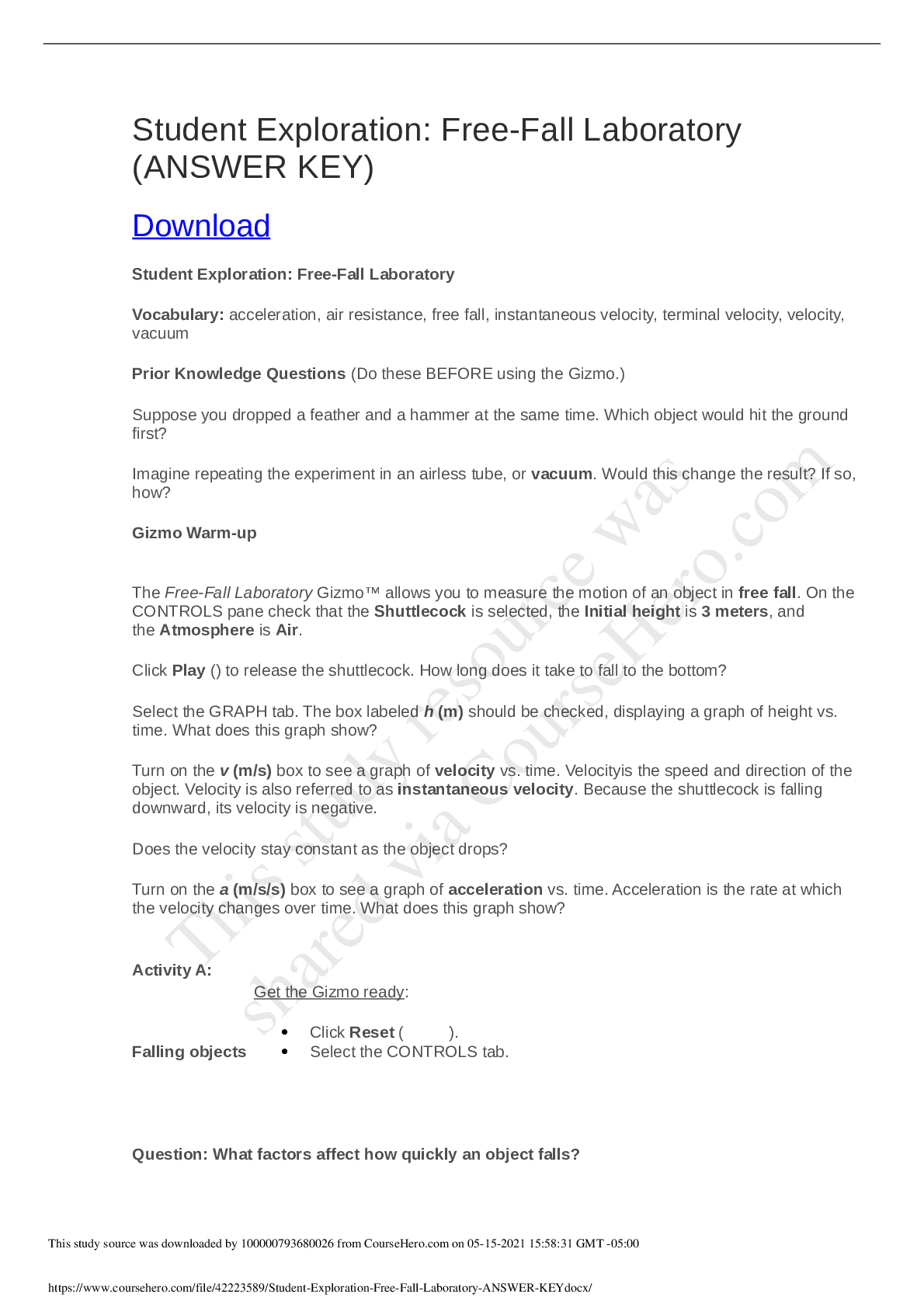
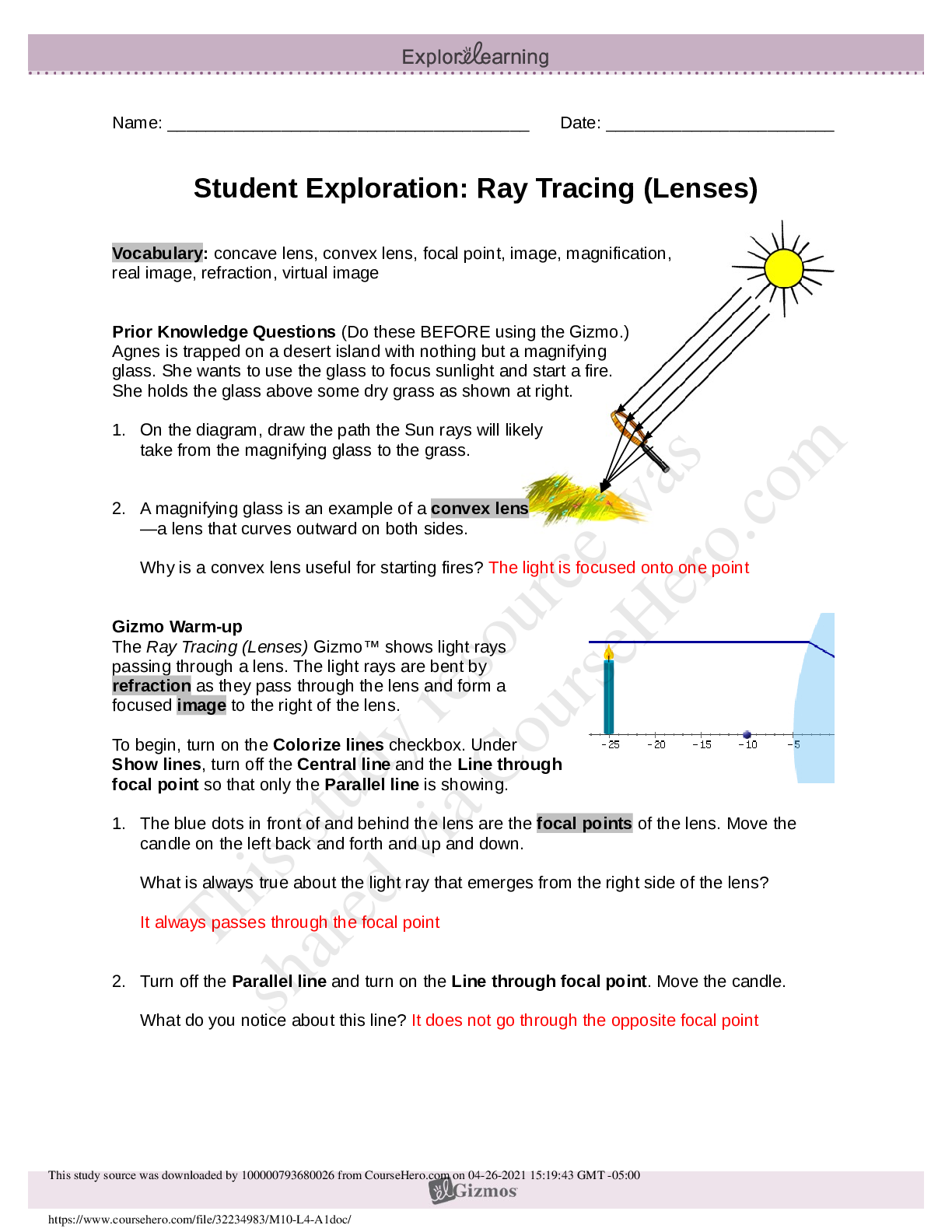
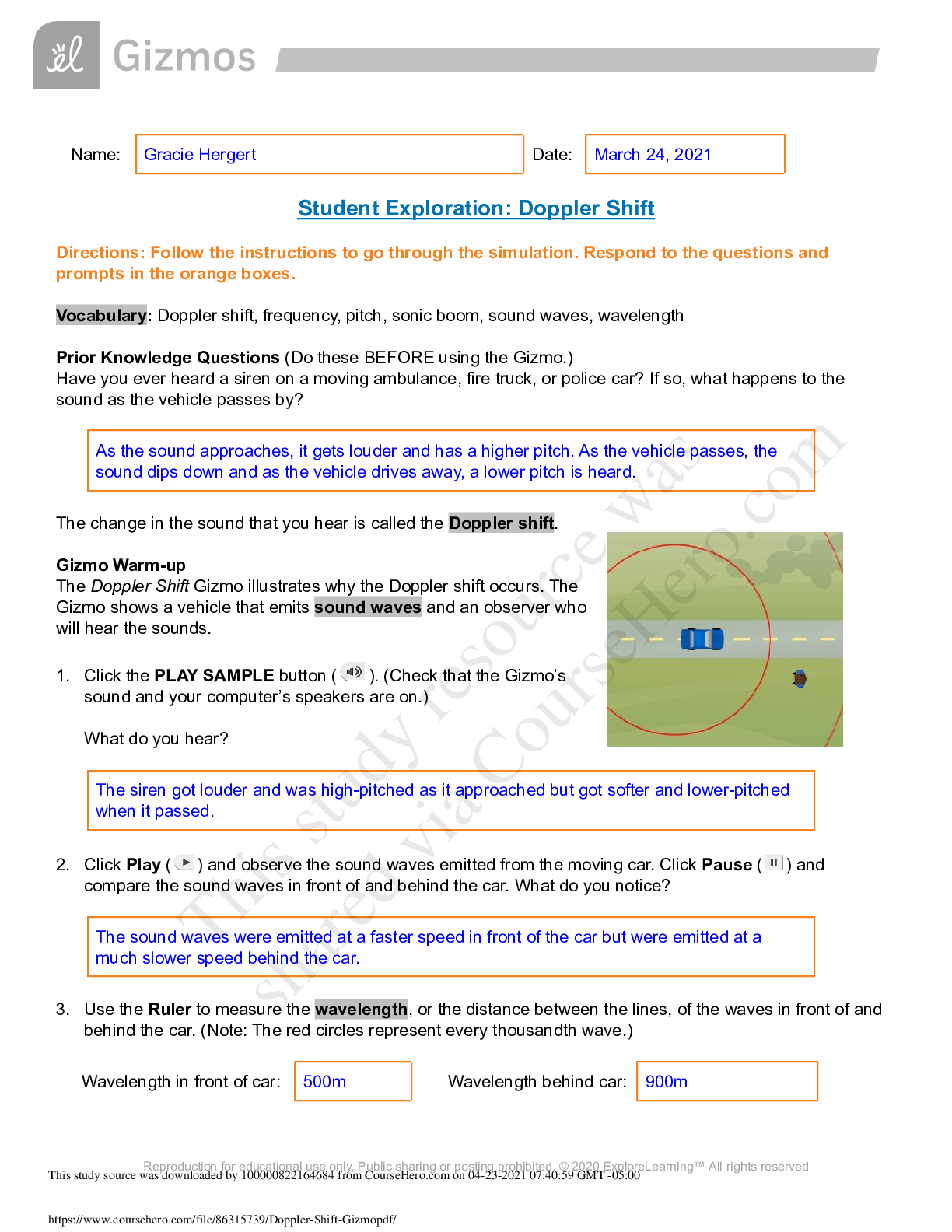
.png)
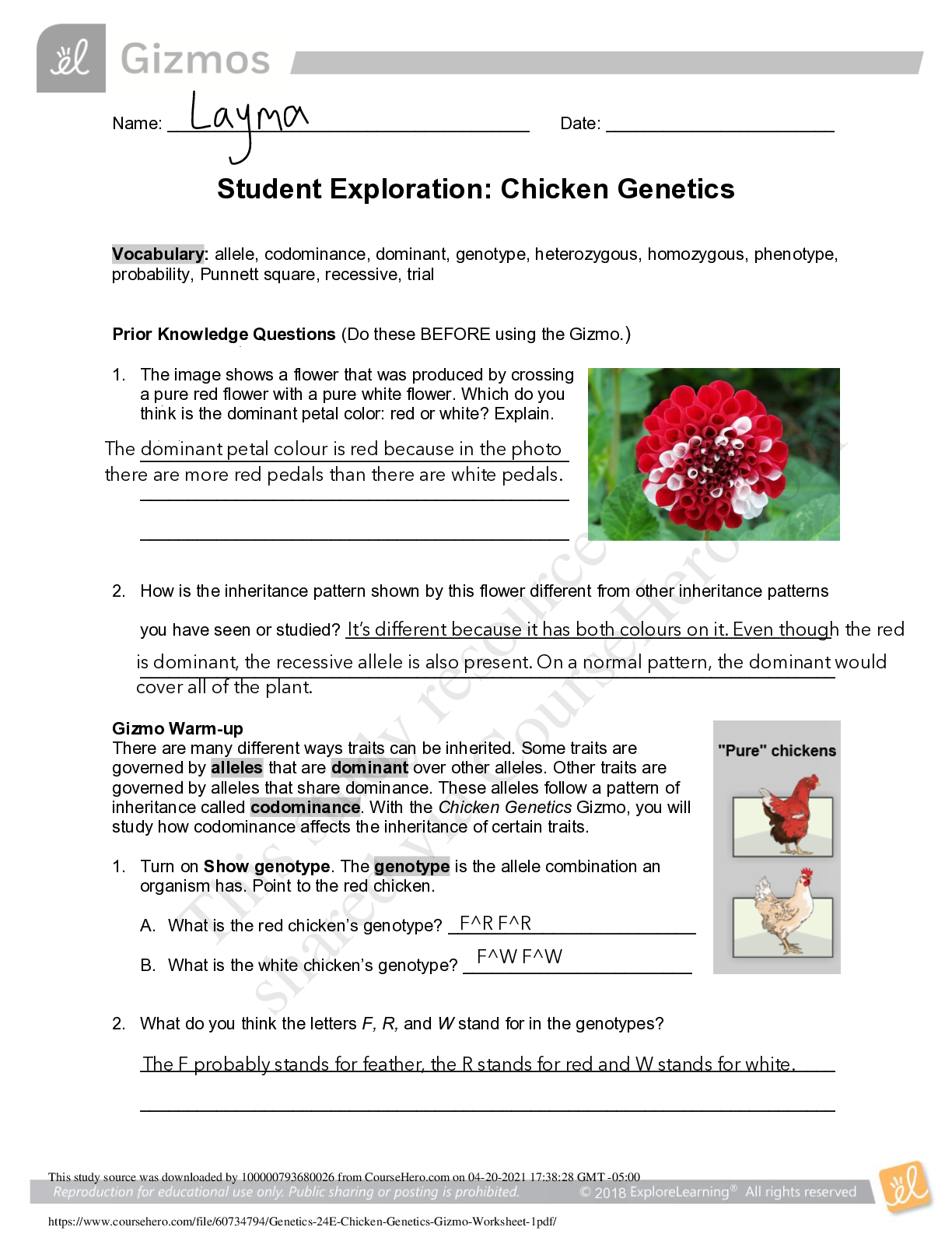
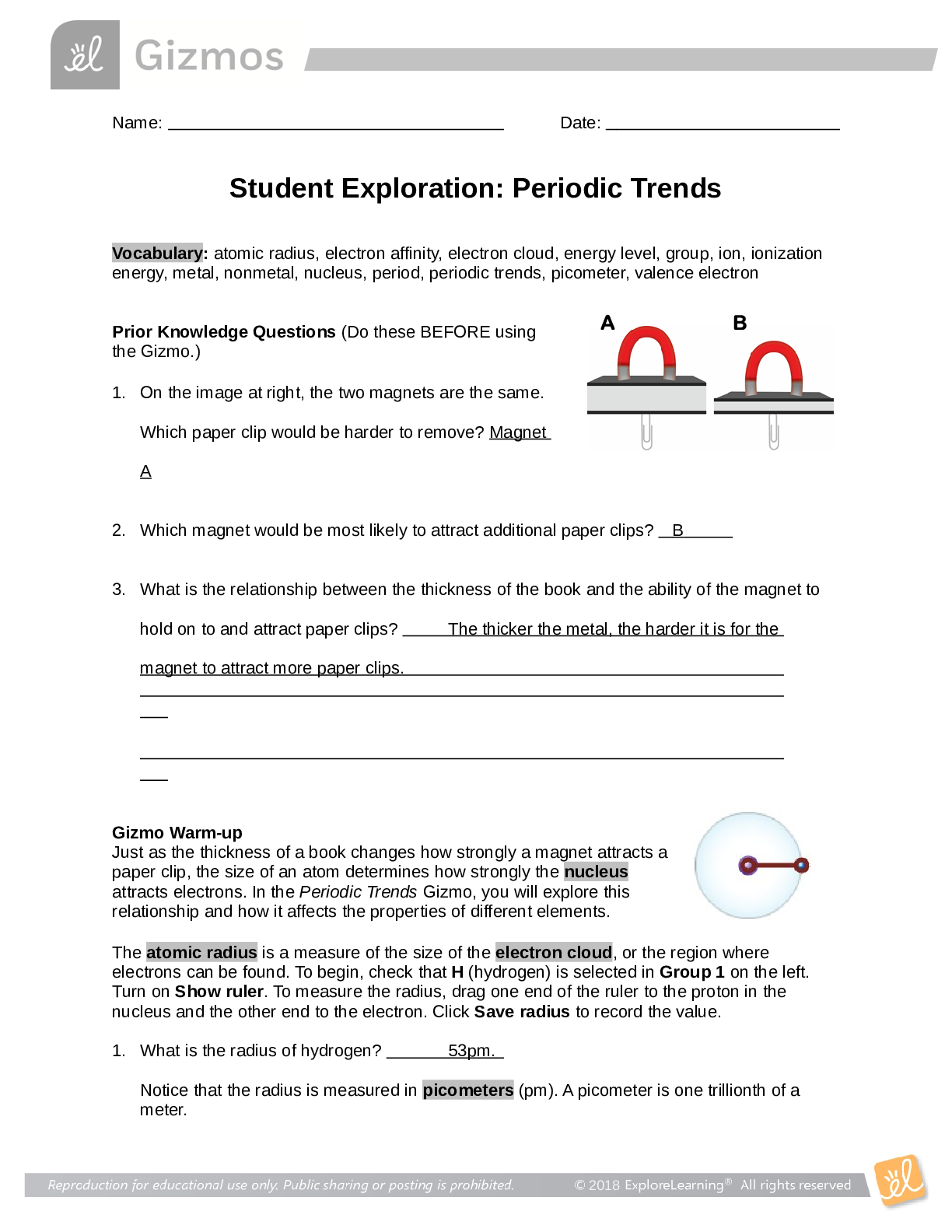
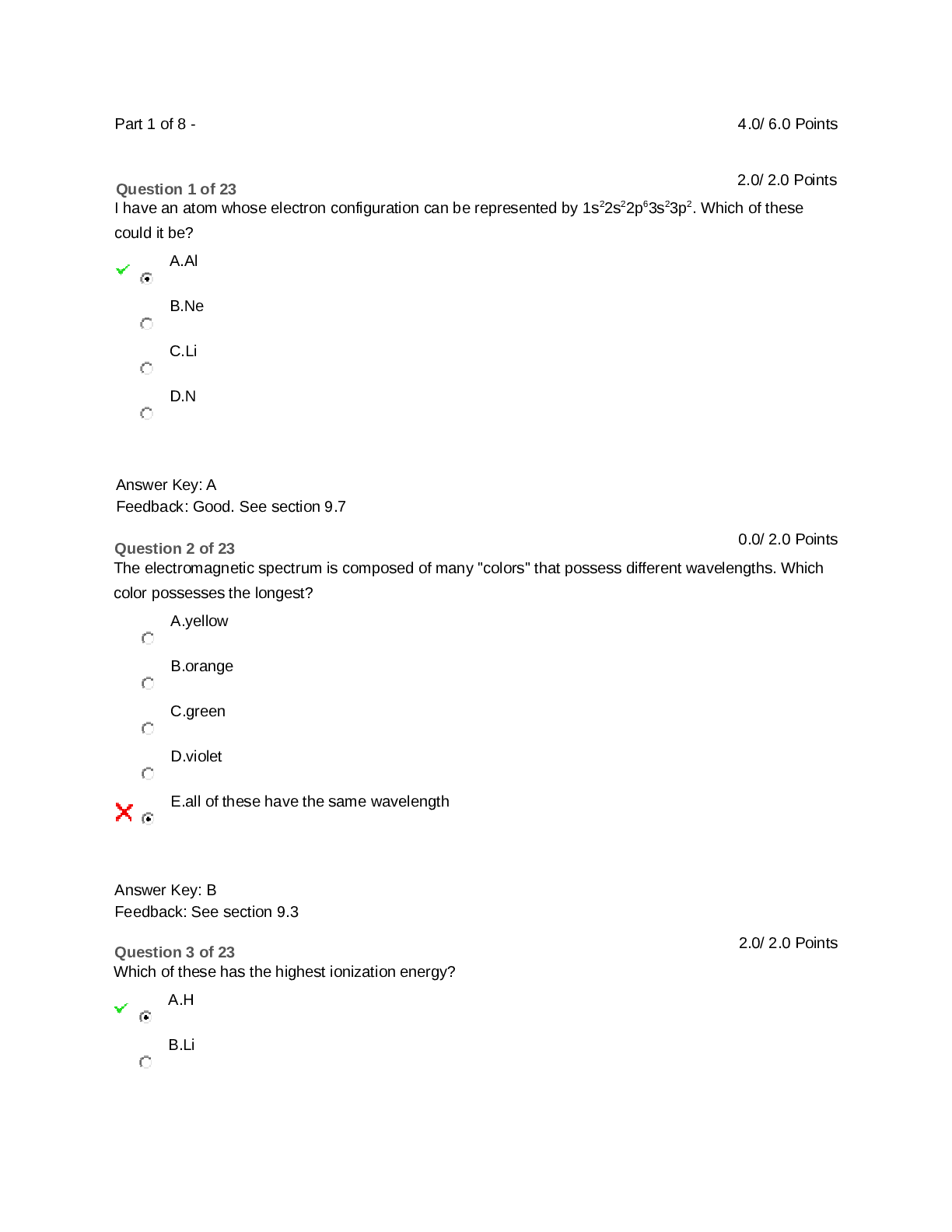
.png)
